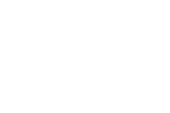 |
 |
 |

|
Tokujin Yoshioka
Credit: Tokujin Yoshioka
|
|
 |
TOKUJIN YOSHIOKA
Artist
In the exposition Crystallize in Tokyo from 3/10 through 19/1/2014 Yoshioka's oeuvre will be seen in a spectacular way.
Born in 1967, Tokujin YOSHIOKA is one of the most influential artists in the world, highly acclaimed for his unrestrained concepts and experimental creativity in a wide range of fields, including art, design, and architecture, which have won him high acclaim both at home and abroad. It explores the extraordinary fascination of his oeuvre.
As new works of this exhibition, the crystallized painting drawn by the vibration of music, “Swan Lake”, a sculpture of a crystallized flower, “Rose”, a chair constructed of seven strings, “Spider’s thread” and “Rainbow Church” built of crystal prisms and other pieces that have never been exhibited including his major works. This exhibition will be a vital opportunity to consider the relationship between nature and human-beings, and to share the scene that he “crystallizes (= gives a form to)” it as his creation for the next generation
|

|
Posted 30 October 2013
|
Share this:
|
|
Tokujin Yoshioka
Artist
Born in Saga, Japan in 1967. After he graduated Kuwasawa Design School in 1986, worked under Shiro Kuramata and Issey Miyake. He established his own studio, TOKUJIN YOSHIOKA INC. in 2000. His experimental and innovative creations, which transcend the boundaries of art, design, and architecture, are highly evaluated in the world. Including space design and installation for ISSEY MIYAKE, he designed SWAROVSKI's flagship store "SWAROVSKI GINZA". Also, he has collaborated with various leading companies such as Cartier, Hermès, LEXUS, TOYOTA, NTT, and other noted ones.
Since the paper chair "Honey-pop"(2001) has attracted a great deal of public attention, Tokujin produced the chair made by baking fiber structure "PANE Chair - Baking A Bread Chair". Optical glass project started in 2002. Since then, "Water Block", "Chair Disappears in the Rain", the largest optical glass table "Waterfall" have received high acclaim in the world, and "Water Block" is permanently exhibited at Musee d'Orsay, Paris since 2011. He also designed product design such as YAMAGIWA’s lighting “T?FU”, cell phone "MEDIA SKIN" for au design project, and designed logo and packaging for re-branding of Japanese famous skin care bland FANCL. He was selected by the Japanese edition of Newsweek as one of the "100 most respected Japanese by the world", and some of his most important works are exhibited as a part of permanent collections in the world’s well-known museums such as Museum of Modern Art(MoMA) in New York, Centre National d’ Art et de Culture Georges Pompidou, Victoria and Albert Museum, Cooper Hewitt National Design Museum and Vitra Design Museum.
At Milano salone, he presents new works every year from various leading furniture brand such as Cassina, Driade, Kartell and MOROSO. He also presented installations for LEXUS, SWAROVSKI and MOROSO, and they transcent the boundary of design and highly valued as art. He also directed exhibitions such as "Second Nature" at 21_21 DESIGN SIGHT in 2008, and Cartier’s special exhibition “Story of ...” - Memories of Cartier creations (2009). In 2010, he held “Tokujin Yoshioka_SPECTRUM” in Seoul, Korea, and “Sensing Nature” at Mori museum.
He received prizes such as "Mainichi Design Award, 2001", "Cultural Affairs Section of Government of Japan, Encourage Prize, 2006", "Design Miami, Designer of the Year, 2007", "Elle Deco International Design Awards (EDIDA)/ Designer of the Year 2009", "TOKYO Design & Art ENVIRONMENTAL AWARDS / Artist of the Year 2010", "A&W Architektur & Wohnen/Designer of the Year 2011", and "Maison & Objet/ Creator of the Year 2012".
His books are "TOKUJIN DESIGN" (Gap Publication), "Tokujin Yoshioka Design" (Phaidon Press), "Invisible Forms" (Access Publishing), "TOKUJIN YOSHIOKA" (Rizzoli International Publications ). Appeared in television broadcaster TBS’s documentary program, "Jonetsu Tairiku" and selected by the Japanese edition of Newsweek as one of the "100 most respected Japanese by the world," and "The 100 Most Creative People in Business 2010" by Fast Company magazine in America.
Born from nature
Nature provides us astonishiment that is beyond our imagination. We may be shaken by its power, be struck with awe and praise the inscrutable beauty simultaneously. What exactly are these feeling? Why can nature move our hearts? And how do we sense it?
I think the answer to these questions lies in the mechanism of life inscribed in human, which is outside the reach of memory or senses. Life of human is also given from nature, which evolved from the harmony of the myriad of chances and necessity. That is why it feels to me that there are the mechanism of unifying the connection between human and nature within our lives.
Nature may not actively produce “beauty”, but it is filled with energy to create it. I infused the exhibition tile “Crystallize” with meaning of “creating works from crystallizing the energy of nature.”
Works of crystal take their forms as if power of nature animates them and an architecture formed by light composes beautiful pieces of poem. Resonating with life, energy of nature appears in the works of art.
Forms of works generated from nature go beyond our imagination. They take their own figures by reacting with nature and its hidden energy that move our heart. This is the liberation from the concept of formation and techniques.
And there exists my answer to the future.
See Agenda >Museum of Contemporary Art Tokyo, exposition Tokujin Yoshioka -Crystallize
|

|

|

|

|

|
|
|
Tokujin Yoshioka, Waterfall - Rainbow Church
Credit: Tokujin Yoshioka
Waterfall 2006
Although it is transparent, the glass piece emits a strong aura created by the refraction of light. It is the beauty of chance born at the moment when the glass is solidified. It is created by the beauty of randomness that nature brings out, reminding us the beautiful ripple and sparkles on the surface of water. There, like a sculpture from a block of water, the transparent yet dynamic shape appears. This project, started in 2002 including the glass bench “Water Block”, has evolved into a variety of works such as “Chair that disappears in the rain” for Roppongi Hills and the world's largest optical glass table “Waterfall”. I participated in the renovation project of the Impressionist gallery at Musée d’Orsay, Paris. Some of “Water Block” are permanently exhibited with masterpieces of Mannet, Degas, Monet, Cézanne and Renoir. The glass benches are placed as if they are filled with the light depicted in the Impressionist masters’ works, so that they will create the space where the beautiful dialogue starts between history and present.
|
|
|
|
|
Tokujin Yoshioka
Credit: Tokujin Yoshioka
Swan Lake 2013
- Crystallized Painting
Life and energy in nature are beyond human's imagination.
“Crystallized project” initiated in 2007 is the experiment creating forms along with natural forces. By growing natural crystals in a water tank, it is as if the energy of life is injected into the works. The forms of natural crystals developed according to the law of nature, express the nature’s unimaginable energy in diverse forms such as the chairs, paintings and sculptures. During the crystallization process of the painting, a music is played. Therefore its vibration influences the formation of natural crystals. This work named “Swan Lake” is created by playing the music of Pyotr Ilych Tchaikovsky, “Swan Lake”. Life of nature and energy transforms a piece of music into a painting, and fosters a life in crystals.
|
|
|
|
|
Tokujin Yoshioka
Credit: Tokujin Yoshioka
Spider’s Thread 2013
A chair created from seven threads.
In the story “the spider’s thread” written by Ryunosuke Akutagawa, the Buddha decides to give one chance to a criminal in hell who did a good deed of saving a spider when he was alive. The Buddha takes a thread of a spider in Heaven and lowers it down to Hell?so that the criminal can climb up from the Hell to the Paradise. In the story, a thread of a spider is a symbol of slight hope and fragility. In the process of making “VENUS - natural crystal chair (2008)”, a chunk of fiber was used for growing crystals. However, “Spider’s thread” applies the structure of natural crystals in an advanced way aiming to produce a form even closer to the natural form. Seven threads are stretched and tighten between the frame like a spider’s web, and draw a three dimensional sketch of a chair in the air. By growing crystals on this structure made by only seven thin threads, it becomes a crystal structure that set a form of a chair. Simplifying the volume of its form as much as possible and following the natural form, a sculpture of chair will appear formed by the power of nature.
|
|

|

|

|

|

|
|
|
Tokujin Yoshioka
Credit: Tokujin Yoshioka
ROSE 2013
The “ROSE” is a sculpture of rose composed by crystals. A rose, the symbol of love, is crystallized, and with the growth of crystals, it is given a new life to be a sculpture. It creates a new sculpture beyond our imagination. The color of rose is absorbed into the crystals during the process of growth, and gives a subtle color to the diffused reflection in the crystals. The “ROSE” is a poetic piece of crystallized flower, reflecting the hidden energy of nature kept in the rose itself. The ancient wild “soul” in a rose selects the form and the color itself and sculptures itself slow and steadily. When facing the rose, the flower drawn by the crystals, an invisible thorn of everlasting true love shall sting you.
|
|
|
|
|
Tokujin Yoshioka
Credit: Tokujin Yoshioka
Rainbow Church 2010
The Rosaire Chapel designed by Henri Matisse was polished throughout his last years. I visited this chapel located in Vance in my early 20's, and had a mysterious experience of being filled with overwhelming light and vibrant colors. A dream to build architecture like this chapel came up to me strongly. As one of the important elements in the architecture project “Rainbow Church”, the stained glass composed of 500 crystal prisms converts natural rays into rainbow color so that “miraculous light” appears in the space.
|
|
|
|
|
Tokujin Yoshioka
Credit: Tokujin Yoshioka
Rainbow Chair 2007 | Ray of Light 2013
Astonished by the Rosaire Chapel by Henri Matisse, I came up with the idea of the architecture “Rainbow Church” where visitors are filled with light and integrated with nature. In its interior space, “Rainbow Chair” is installed as the symbol of “Rainbow Church”. A solid and transparent sculpture made by crystal prisms emits an aura of rainbow light.
Shining from a window, “Ray of Light” is a sculpture of prisms. Like a stained glass in a church, a window is formed by the radiance of crystal prisms. The miraculous light produced by the solar energy becomes a sculpture, and creates a space where the nature and the architecture are unified.
|
|
|
|
|
|


